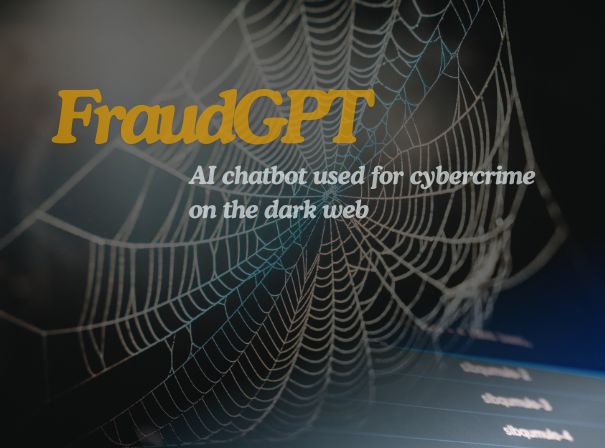FraudGPT: The Dark Side of AI-Powered Cybercrimel

Introduction
Artificial Intelligence (AI) has revolutionized industries, enhancing productivity and streamlining processes. However, while AI is often used for good, cybercriminals have begun leveraging its power for malicious purposes. One such AI tool making headlines on the dark web is FraudGPT. This AI-driven tool is allegedly designed to assist in cybercrime, making it easier for hackers and scammers to carry out illegal activities.
In this article, we'll explore what FraudGPT is, its intended uses, and the dangers it poses to cybersecurity.
What is FraudGPT?
FraudGPT is believed to be an AI-powered chatbot circulating on underground hacking forums and dark web marketplaces. Unlike legitimate AI tools such as OpenAI’s ChatGPT, which promote ethical AI use, FraudGPT is designed to facilitate cybercrime. It is marketed as an advanced tool that can generate malicious scripts, conduct phishing attacks, and bypass security protocols.
According to cybersecurity researchers, FraudGPT is being sold through subscription models, similar to legitimate AI services, making it accessible to individuals with malicious intent.
Main Purposes of FraudGPT
- Phishing and Social Engineering: FraudGPT can generate realistic phishing emails that trick users into revealing sensitive information like passwords and banking details.
- Malware and Ransomware Generation: Reports suggest that FraudGPT can generate malicious code, including trojans, keyloggers, and ransomware.
- Credit Card and Identity Fraud: FraudGPT is allegedly used for generating fake identities, stolen credit card details, and deepfake scams.
- Hacking Assistance: FraudGPT is said to automate hacking techniques, making it easier for users to exploit security vulnerabilities.
- Bypassing Security Measures: FraudGPT may help bypass CAPTCHAs, authentication systems, and other security layers.
Why FraudGPT is a Serious Threat
The rise of AI-driven cybercrime tools like FraudGPT represents a significant challenge for cybersecurity professionals and law enforcement agencies.
- Massive increase in cyber fraud
- Easier access to hacking tools for criminals
- Financial and reputational damage to individuals and businesses
- Legal and regulatory challenges in AI governance
How to Protect Yourself
- Use Multi-Factor Authentication (MFA)
- Be Cautious with Emails & Messages
- Keep Software & Security Systems Updated
- Educate Yourself on Phishing & Cyber Threats
- Report Suspicious Activity
Conclusion
The emergence of FraudGPT highlights the dark side of AI and its potential misuse by cybercriminals. While AI can be a powerful tool for good, it also poses serious risks if used unethically. Governments, businesses, and cybersecurity experts must work together to combat AI-driven cyber threats and protect users from fraud.
💡 Remember: AI is only as ethical as the people who use it. Stay informed, stay safe!z
FAQ
- What is FraudGPT? FraudGPT is an AI-powered chatbot circulating on the dark web, designed for cybercriminal activities such as phishing, hacking, and fraud.
- Is using FraudGPT illegal? Yes, using FraudGPT for fraudulent activities is illegal and can result in severe legal consequences.
- How do cybercriminals access FraudGPT? FraudGPT is reportedly being sold on underground forums and dark web marketplaces through subscription models.
- How can I protect myself from AI-driven cyber threats? Use strong passwords, enable Multi-Factor Authentication (MFA), be cautious with emails, and keep your software updated.
- Are there ethical alternatives to FraudGPT? Yes, AI tools like ChatGPT, Bard, and other cybersecurity-focused AI can be used ethically for research and security testing.


